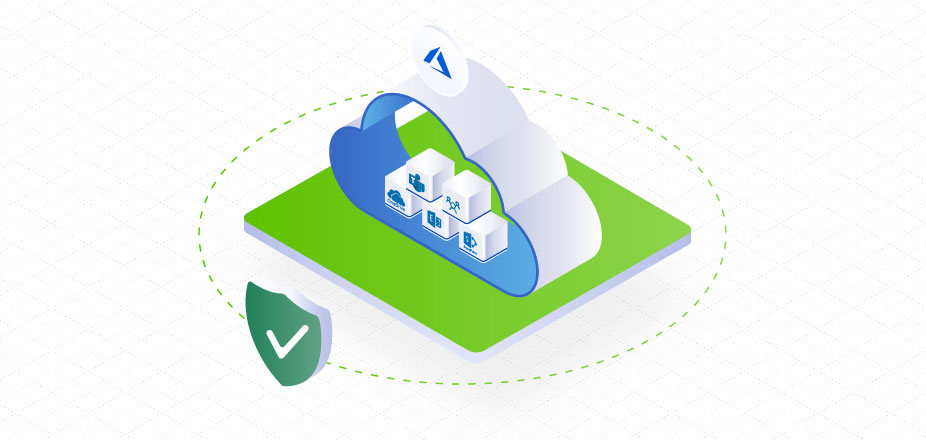In the early days of the global pandemic, Microsoft saw a 30% increase in Microsoft 365 (M365) monthly active users, from 200 million to 258 million (March 2020). Later in the year, as the pandemic continued to rage, so did M365 adoption. In October 2020, Microsoft announced an increase of 21% in its M365 commercial revenue and a remarkable 115 million daily Teams users. That was up from 75 million in late April and 44 million in March when the pandemic first took off. Even today, enterprise adoption of M365 is on a continual upward trajectory.
As more organizations embrace remote work — not only as a means of riding out COVID-19, but also for the long term — they’re embracing and expanding adoption of cloud-based platforms like Microsoft 365, more specifically tools like Exchange Online, SharePoint Online, OneDrive, and Teams to communicate, share files and more. Some SaaS vendors offer basic native data protection capabilities, for example, data in M365 is recoverable for 30 days. In the absence of a third-party enterprise-class data protection tool, organizations will not be able to recover their data beyond 30 days. Things get worse for organizations that continue to believe that the SaaS vendors are responsible for protecting their data.
35% of respondents in a recent ESG survey continue to believe that the SaaS vendors are responsible for protecting their data.
— ESG 2021 Data Protection Cloud Strategies
That’s a lot of important data moving around the cloud — data that should be protected just as on-premises data for working teams is protected. The situation presents a challenge to business continuity.Gartner predicted that by 2022, 75 percent of organizations that outsource their email and collaboration tools to a cloud provider won’t be able to meet recovery objectives in the event of an outage.
At Cohesity, we’ve been offering comprehensive backup and recovery solutions for Microsoft 365, including Exchange Online, OneDrive, and SharePoint Online for over a year. With our 6.6 software release, we’re now doing the same for newly mission-critical applications Microsoft Teams and Microsoft Groups. Basically, wherever and whenever your organization stores data in Microsoft 365, our data management software ensures recoverability of your data according to your business SLAs, and meets your evolving data governance and compliance requirements
Protecting Microsoft 365
Although the Microsoft 365 portfolio has some native data retention capabilities, keeping your data safe is ultimately your responsibility. That’s why we offer comprehensive enterprise-class backup and data management for the Microsoft 365 Suite. Cohesity now brings hyperscale simplicity and efficiency to protecting Exchange Online, SharePoint Online, OneDrive, Public Folders, Microsoft Teams, and Microsoft Groups – in addition to all the other data sources we protect.
As enterprises are expanding Microsoft 365 adoption, our latest release makes it easy to protect the most essential components of your Microsoft 365 productivity suite as part of a comprehensive strategy for all your enterprise data — versus treating M365 as its own silo. Our backup and recovery features work seamlessly with Microsoft 365 to enable high-speed backups of all data; rapid, granular recovery; and visibility into all available data through a global search function. For enterprises migrating to a cloud infrastructure, that means peace of mind as they reimagine the delivery of IT services.
With Cohesity software, IT simplifies data retention, management, and compliance by automatically discovering and protecting all Microsoft 365 data. Our solution indexes metadata to help ease data recovery in the event of an outage or ransomware attack and can restore objects to their original location or an alternative location, for more flexible disaster recovery (DR) options. Here’s some detail about those capabilities by solution:
Exchange Online
If your enterprise uses Exchange Online, Cohesity provides mailbox — primary, archive, and recoverable — backup and recovery as well as granular and flexible recovery of mailbox content. You can recover data back to the mailbox(s) or download mailbox content as a PST for faster recovery at scale. Long-term retention is easy with archival to the cloud or replication to another Cohesity cluster. We’ve improved usability for scale and enabled cross-Microsoft 365 domain restores with this new version, too, as well as throttling controls. That means we’ve derived best practices for backing up Microsoft 365 by understanding how Microsoft throttles API requests. Many of the parameters that we have in the form of flags can be exposed to you so you can decide how to tweak them to make them be suitable for your organization. For example, you may want to put a cap on the maximum concurrent mailboxes that can be downloaded on a cluster to help maintain QoS for other workloads.
OneDrive
Cohesity software includes a similar set of robust backup and recovery capabilities for OneDrive as Exchange Online, plus more. For example, you can backup and recover OneDrive to the original user or if needed a different user. You can granularly recover and download OneDrive content as well as replicate and archive workflows. We’ve put you in charge of security and permissions handling as well as enabled the cross-Microsoft 365 domain restores and throttling controls we mentioned before.
Cohesity helped us to transform our backup and recovery process and tap into the advantages of public cloud infrastructure with Microsoft Azure. With the extended capabilities for Microsoft Office 365 and OneDrive we are able to ensure consistent availability of data for our company.
— Brian Critchlow, IT systems administrator for Santa Cruz Seaside Company.
SharePoint Online
Another way Cohesity protects data against human errors, malware, and other forms of corruption is by restoring objects to their original or an alternative location — including an alternate cloud destination. In addition, our software performs site (hierarchy) backup and recovery to both original and alternate sites for SharePoint Online. You can create a site hierarchy. And when you need to get your data back quickly, Cohesity enables both granular recovery and download of site content. That’s in addition to the other capabilities that we already mentioned, including replication and archival workflows, security and permissions handling, cross-Microsoft 365 domain restores, and throttling controls.
We adopted Microsoft 365 SharePoint for our next-generation Intranet platform and have more confidence in fast data restores because we complement it with Cohesity.
— Carl Holzhauer, Infrastructure Manager, Shumaker, Loop & Kendrick, LLP
Public Folders
Our software also supports Public Folder backup and recovery. You can perform granular recovery of public folder content and easily handle the rebalancing of public folders across mailboxes. In this release of Cohesity, we’ve also enabled archiving to the cloud and replication to another cluster for Public Folders while improving usability for scale. You can also take advantage of the aforementioned throttling controls to tune performance appropriately.
Microsoft Teams
With our most recent release, you can now back up and recover Teams data — everything from conversations to private and public channels. You simply manage the mapping between Teams to the underlying Group (Mailbox, and SharePoint Online Sites) and the related conversations and chats. Teams security permissions also can be handled in Cohesity. What’s unique here with our solution is it’s an exclusive workflow for Teams restores with zero dependencies on any Mailbox or SharePoint Online recovery workflow.
Microsoft Groups
Also new in this release is support for Microsoft Groups backup and recovery of mails and files. You can now manage the mapping between Groups to the underlying Mailbox, and SharePoint Online Site. And just like with our Teams capabilities, these workflows are self-contained — without dependency on any other recovery flow. You also have the freedom and peace of mind to handle security permissions in Groups, too.
M365 Data Responsibility Belongs to IT
Although hosting productivity, collaboration and other enterprise applications in the cloud relieves an organization’s IT staff from maintaining a certain amount of physical infrastructure and worrying about ensuring application availability, ensuring appropriate access to enterprise data is still IT’s responsibility.
Cloud providers guarantee uptime — that data is available — and in the case of Microsoft 365, a limited, 30-day window of data retention. But for many organizations, such as those in heavily regulated industries, that isn’t nearly enough. They require robust, granular, enterprise-wide backup and recovery that protects data wherever it exists, whether in the cloud or on-prem.
What’s more, even as organizations re-architect their IT resources to include more cloud-based infrastructure, cybercriminals continue to adapt, targeting different data stores with ransomware. Email — hosted in the cloud or in data centers — has become a target of ransomware. So have data backups themselves. Nowadays, it’s more important than ever to implement end-to-end backup and recovery with anti-ransomware capabilities such as built-in immutability, so organizations can rapidly restore everything from shared files to email, to virtual machines (VMs), traditional and modern databases, no matter where those resources live.
All told, now that Cohesity DataProtect spans all of Microsoft 365, you and your organization can rest assured your data is protected — and can be rapidly recovered —in order to meet the demands of your business.
















